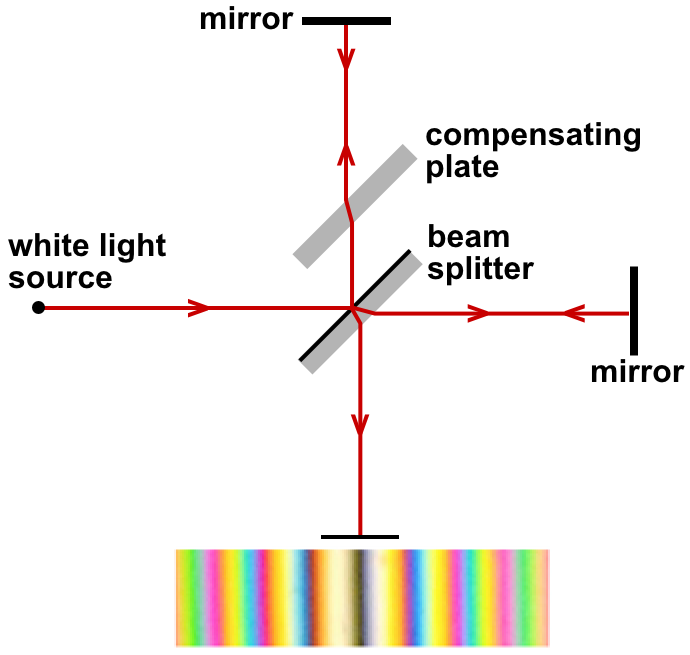|
Rayleigh–Jeans Law
In physics, the Rayleigh–Jeans law is an approximation to the spectral radiance of electromagnetic radiation as a function of wavelength from a black body at a given temperature through classical arguments. For wavelength ''λ'', it is B_\lambda(T) = \frac, where B_\lambda is the spectral radiance (the power emitted per unit emitting area, per steradian, per unit wavelength), c is the speed of light, k_\text is the Boltzmann constant, and T is the temperature in kelvins. For frequency \nu, the expression is instead B_\nu(T) = \frac. The Rayleigh–Jeans law agrees with experimental results at large wavelengths (low frequencies) but strongly disagrees at short wavelengths (high frequencies). This inconsistency between observations and the predictions of classical physics is commonly known as the ultraviolet catastrophe. Planck's law, which gives the correct radiation at all frequencies, has the Rayleigh–Jeans law as its low-frequency limit. Historical development ... [...More Info...] [...Related Items...] OR: [Wikipedia] [Google] [Baidu] |
Equipartition Theorem
In classical physics, classical statistical mechanics, the equipartition theorem relates the temperature of a system to its average energy, energies. The equipartition theorem is also known as the law of equipartition, equipartition of energy, or simply equipartition. The original idea of equipartition was that, in thermal equilibrium, energy is shared equally among all of its various forms; for example, the average kinetic energy per Degrees of freedom (physics and chemistry), degree of freedom in translation (physics), translational motion of a molecule should equal that in rotational motion. The equipartition theorem makes quantitative predictions. Like the virial theorem, it gives the total average kinetic and potential energies for a system at a given temperature, from which the system's heat capacity can be computed. However, equipartition also gives the average values of individual components of the energy, such as the kinetic energy of a particular particle or the potent ... [...More Info...] [...Related Items...] OR: [Wikipedia] [Google] [Baidu] |
Sakuma–Hattori Equation
In physics, the Sakuma–Hattori equation is a mathematical model for predicting the amount of thermal radiation, radiometric flux or radiometric power emitted from a perfect blackbody or received by a thermal radiation detector. History The Sakuma–Hattori equation was first proposed by Fumihiro Sakuma, Akira Ono and Susumu Hattori in 1982. In 1996, a study investigated the usefulness of various forms of the Sakuma–Hattori equation. This study showed the Planckian form to provide the best fit for most applications. This study was done for 10 different forms of the Sakuma–Hattori equation containing not more than three fitting variables. In 2008, BIPM CCT-WG5 recommended its use for radiation thermometry measurement uncertainty budgets below 960 °C. General form The Sakuma–Hattori equation gives the electromagnetic signal from thermal radiation based on an object's temperature. The signal can be electromagnetic flux or signal produced by a detector measuring t ... [...More Info...] [...Related Items...] OR: [Wikipedia] [Google] [Baidu] |
Wien's Displacement Law
In physics, Wien's displacement law states that the black-body radiation curve for different temperatures will peak at different wavelengths that are inversely proportional to the temperature. The shift of that peak is a direct consequence of the Planck's law, Planck radiation law, which describes the spectral brightness or intensity of black-body radiation as a function of wavelength at any given temperature. However, it had been discovered by German physicist Wilhelm Wien several years before Max Planck developed that more general equation, and describes the entire shift of the spectrum of black-body radiation toward shorter wavelengths as temperature increases. Formally, the wavelength version of Wien's displacement law states that the Radiant flux#units, spectral radiance of black-body radiation per unit wavelength, peaks at the wavelength \lambda_\text given by: \lambda_\text = \frac where is the absolute temperature and is a proportionality constant, constant of proport ... [...More Info...] [...Related Items...] OR: [Wikipedia] [Google] [Baidu] |
Stefan–Boltzmann Law
The Stefan–Boltzmann law, also known as ''Stefan's law'', describes the intensity of the thermal radiation emitted by matter in terms of that matter's temperature. It is named for Josef Stefan, who empirically derived the relationship, and Ludwig Boltzmann who derived the law theoretically. For an ideal absorber/emitter or black body, the Stefan–Boltzmann law states that the total energy radiated per unit area, surface area per unit time (also known as the ''radiant exitance'') is directly Proportionality (mathematics), proportional to the fourth power of the black body's temperature, : M^ = \sigma\, T^. The constant of proportionality, \sigma, is called the Stefan–Boltzmann constant. It has the value In the general case, the Stefan–Boltzmann law for radiant exitance takes the form: M = \varepsilon\, M^ = \varepsilon\,\sigma\, T^4 , where \varepsilon is the emissivity of the surface emitting the radiation. The emissivity is generally between zero and one. An emiss ... [...More Info...] [...Related Items...] OR: [Wikipedia] [Google] [Baidu] |
Taylor Series
In mathematics, the Taylor series or Taylor expansion of a function is an infinite sum of terms that are expressed in terms of the function's derivatives at a single point. For most common functions, the function and the sum of its Taylor series are equal near this point. Taylor series are named after Brook Taylor, who introduced them in 1715. A Taylor series is also called a Maclaurin series when 0 is the point where the derivatives are considered, after Colin Maclaurin, who made extensive use of this special case of Taylor series in the 18th century. The partial sum formed by the first terms of a Taylor series is a polynomial of degree that is called the th Taylor polynomial of the function. Taylor polynomials are approximations of a function, which become generally more accurate as increases. Taylor's theorem gives quantitative estimates on the error introduced by the use of such approximations. If the Taylor series of a function is convergent, its sum is the limit ... [...More Info...] [...Related Items...] OR: [Wikipedia] [Google] [Baidu] |
Planck Constant
The Planck constant, or Planck's constant, denoted by h, is a fundamental physical constant of foundational importance in quantum mechanics: a photon's energy is equal to its frequency multiplied by the Planck constant, and the wavelength of a matter wave equals the Planck constant divided by the associated particle momentum. The constant was postulated by Max Planck in 1900 as a proportionality constant needed to explain experimental black-body radiation. Planck later referred to the constant as the "quantum of Action (physics), action". In 1905, Albert Einstein associated the "quantum" or minimal element of the energy to the electromagnetic wave itself. Max Planck received the 1918 Nobel Prize in Physics "in recognition of the services he rendered to the advancement of Physics by his discovery of energy quanta". In metrology, the Planck constant is used, together with other constants, to define the kilogram, the SI unit of mass. The SI units are defined in such a way that, w ... [...More Info...] [...Related Items...] OR: [Wikipedia] [Google] [Baidu] |
Black-body Radiation
Black-body radiation is the thermal radiation, thermal electromagnetic radiation within, or surrounding, a body in thermodynamic equilibrium with its environment, emitted by a black body (an idealized opaque, non-reflective body). It has a specific continuous spectrum that depends only on the body's temperature., Chapter 13. A perfectly-insulated enclosure which is in thermal equilibrium internally contains blackbody radiation and will emit it through a hole made in its wall, provided the hole is small enough to have a negligible effect upon the equilibrium. The thermal radiation spontaneously emitted by many ordinary objects can be approximated as blackbody radiation. Of particular importance, although planets and stars (including the Earth and Sun) are neither in thermal equilibrium with their surroundings nor perfect black bodies, blackbody radiation is still a good first approximation for the energy they emit. The term ''black body'' was introduced by Gustav Kirchhoff in 1860. ... [...More Info...] [...Related Items...] OR: [Wikipedia] [Google] [Baidu] |
Max Planck
Max Karl Ernst Ludwig Planck (; ; 23 April 1858 – 4 October 1947) was a German Theoretical physics, theoretical physicist whose discovery of energy quantum, quanta won him the Nobel Prize in Physics in 1918. Planck made many substantial contributions to theoretical physics, but his fame as a physicist rests primarily on his role as the originator of Quantum mechanics, quantum theory and one of the founders of modern physics, which revolutionized understanding of atomic and Subatomic particle, subatomic processes. He is known for the Planck constant, which is of foundational importance for quantum physics, and which he used to derive a set of Unit of measurement, units, today called Planck units, expressed only in terms of fundamental physical constants. Planck was twice president of the German scientific institution Kaiser Wilhelm Society. In 1948, it was renamed the Max Planck Society (Max-Planck-Gesellschaft) and nowadays includes 83 institutions representing a wide range ... [...More Info...] [...Related Items...] OR: [Wikipedia] [Google] [Baidu] |
Wien Approximation
Wien's approximation (also sometimes called Wien's law or the Wien distribution law) is a law of physics used to describe the spectrum of thermal radiation (frequently called the blackbody function). This law was first derived by Wilhelm Wien in 1896. The equation does accurately describe the short-wavelength (high-frequency) spectrum of thermal emission from objects, but it fails to accurately fit the experimental data for long-wavelength (low-frequency) emission. Details Wien derived his law from thermodynamic arguments, several years before Planck introduced the quantization of radiation. Wien's original paper did not contain the Planck constant. In this paper, Wien took the wavelength of black-body radiation and combined it with the Maxwell–Boltzmann statistics, Maxwell–Boltzmann energy distribution for atoms. The exponential curve was created by the use of Euler's number ''e'' raised to the power of the temperature multiplied by a constant. Fundamental constants w ... [...More Info...] [...Related Items...] OR: [Wikipedia] [Google] [Baidu] |
Luminiferous Aether
Luminiferous aether or ether (''luminiferous'' meaning 'light-bearing') was the postulated Transmission medium, medium for the propagation of light. It was invoked to explain the ability of the apparently wave-based light to propagate through empty space (a vacuum), something that waves should not be able to do. The assumption of a spatial plenum (space completely filled with matter) of luminiferous aether, rather than a spatial vacuum, provided the theoretical medium that was required by wave theories of light. The aether hypothesis was the topic of considerable debate throughout its history, as it required the existence of an invisible and infinite material with no interaction with physical objects. As the nature of light was explored, especially in the 19th century, the physical qualities required of an aether became increasingly contradictory. By the late 19th century, the existence of the aether was being questioned, although there was no physical theory to replace it. The ne ... [...More Info...] [...Related Items...] OR: [Wikipedia] [Google] [Baidu] |
Albert Einstein
Albert Einstein (14 March 187918 April 1955) was a German-born theoretical physicist who is best known for developing the theory of relativity. Einstein also made important contributions to quantum mechanics. His mass–energy equivalence formula , which arises from special relativity, has been called "the world's most famous equation". He received the 1921 Nobel Prize in Physics for . Born in the German Empire, Einstein moved to Switzerland in 1895, forsaking his German citizenship (as a subject of the Kingdom of Württemberg) the following year. In 1897, at the age of seventeen, he enrolled in the mathematics and physics teaching diploma program at the Swiss ETH Zurich, federal polytechnic school in Zurich, graduating in 1900. He acquired Swiss citizenship a year later, which he kept for the rest of his life, and afterwards secured a permanent position at the Swiss Patent Office in Bern. In 1905, he submitted a successful PhD dissertation to the University of Zurich. In 19 ... [...More Info...] [...Related Items...] OR: [Wikipedia] [Google] [Baidu] |




